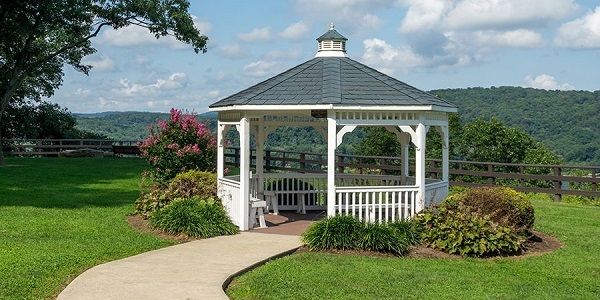A gazebo is more than just a structure; it’s a statement piece for your garden or backyard. It offers a space to relax, entertain, or simply enjoy the outdoors.
While buying a pre-made gazebo might seem convenient, building your own can be a rewarding project that saves money and adds a personal touch. In this guide, we’ll walk you through the steps to create a stunning DIY gazebo, from planning to completion.
Step 1: Planning and Designing Your Gazebo
Define Its Purpose
Before you start, ask yourself:
- Will the gazebo be for dining, lounging, or as a decorative feature?
- How many people will it accommodate?
- Should it have walls, railings, or remain open?
Answering these questions will help determine the size, style, and materials.
Choose a Location
Pick a level area with good drainage. Consider proximity to your home, sun exposure, and wind direction. A spot with a view can enhance its appeal.
Select a Style
Gazebos come in various styles:
- Classic octagonal for a traditional look
- Rectangular or square for a modern touch
- Open-roofed pergola style for a lighter aesthetic
Sketch your preferred design or use online tools for visualization.
Step 2: Gathering Materials and Tools
Materials Needed
- Wood or metal framing (cedar, pine, or treated wood is ideal for durability)
- Concrete mix for secure footings
- Roofing materials (shingles, corrugated metal, or polycarbonate sheets)
- Fasteners and hardware (screws, bolts, brackets)
- Paint, stain, or sealant for finishing
Tools Needed
- Measuring tape
- Level
- Drill and screwdriver
- Saw (circular or miter saw)
- Hammer and nails
- Shovel (for footings)
Step 3: Building the Gazebo
Step 3.1: Lay the Foundation
A sturdy foundation is crucial for a long-lasting gazebo. Options include:
- Concrete Slab
- Mark the area and dig 4–6 inches deep.
- Pour and level concrete for a solid base.
- Deck or Pier Foundation
- Dig holes for footings at least 12 inches deep.
- Fill with concrete and insert metal brackets for posts.
- Gravel Pad
- For a simple, non-permanent option, level the ground and add a gravel base.
Step 3.2: Build the Frame
- Install the Posts
- Secure vertical posts into the footings using brackets.
- Use a level to ensure they’re straight.
- Add Beams and Crossbars
- Attach horizontal beams at the top to connect the posts.
- Install additional crossbars for stability and roof support.
- Construct the Roof
- Create rafters from wood or metal and attach them to the central hub or beams.
- Cover with your chosen roofing material.
- Ensure proper overhang for rain protection.
Step 4: Customizing Your Gazebo
Add Railings or Walls
- For a traditional look, install decorative railings or lattice panels.
- For more privacy, consider adding half-walls or curtains.
Flooring Options
- Wood decking for a rustic vibe
- Stone or tiles for a polished finish
- Gravel or grass base for a natural feel
Decor and Finishing Touches
- Install lighting: LED strips or hanging lanterns.
- Add outdoor furniture like benches or swings.
- Use planters or climbing plants for a natural look.
- Apply weather-resistant paint or stain to protect the structure.
Step 5: Maintenance and Care
To keep your gazebo stunning:
- Regularly clean the roof and flooring.
- Check for loose screws or bolts.
- Reapply sealant or paint every 2–3 years.
DIY Gazebo Tips
- Safety First: Wear safety gear and work with a partner.
- Precision Matters: Measure twice, cut once.
- Permits: Check local regulations before construction.
Building a DIY gazebo not only adds value to your property but also creates a space tailored to your needs. With the right tools, materials, and effort, you can transform your backyard into a personal paradise.
Whether hosting a summer barbecue or sipping coffee on a rainy day, your gazebo will be a place of pride and joy for years to come.
Also Read
DIY garden paths: Creative Ideas for your outdoor space
DIY Patio Installation: Transform Your Backyard

